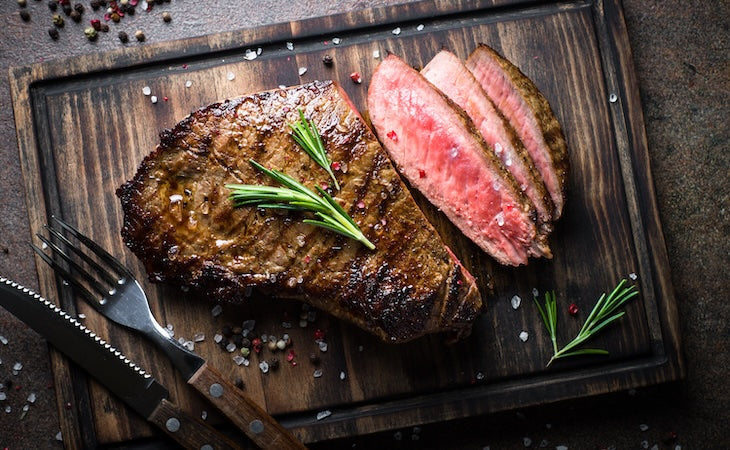
Starting the Carnivore Diet and Overcoming Long-Term Challenges
The Carnivore Diet is a way of eating that focuses exclusively on animal products like meat, fish, eggs, and sometimes dairy it has gained traction for its simplicity and reported health benefits. From weight loss to improved mental clarity, many are drawn to its promise of transforming health by cutting out all plant-based foods. But while starting the Carnivore Diet can feel empowering, sticking with it long-term comes with unique challenges. In this post, I’ll guide you through how to start the Carnivore Diet and address the common struggles people face in maintaining it over time.
So How To Get Started with the Carnivore Diet
Understand the Basics
The Carnivore Diet is straightforward: eat animal-based foods, avoid everything else. This means beef, pork, chicken, fish, organ meats, eggs, and, for some, limited dairy like butter or heavy cream and cheese. No vegetables, fruits, grains, or processed foods. Hydration is key, so prioritize water and consider adding electrolytes (sodium, potassium, magnesium) to support your body’s transition. I believe that it is also important to note that many people choose to live their carnivore lifestyle differently, for example some have kept low oxalate vegetables in their diet and still consider themselves carnivore or carnivore-ish.
Plan Your Meals
Start with simple, high-fat cuts of meat like ribeye steak, ground beef, or pork belly to keep you satiated. Batch-cook to save time and ensure you always have compliant foods on hand. A sample day might include:
- Breakfast: 3-4 eggs cooked in butter with bacon.
- Lunch: Grilled salmon or a beef patty.
- Dinner: Ribeye steak with bone broth. Keep variety in protein sources (beef, lamb, fish) to avoid repetition and ensure nutrient diversity.
Ease Into It
If you’re coming from a standard diet, consider a transition phase. Start with a low-carb or ketogenic diet for 1-2 weeks to reduce carb dependency before going full carnivore. This can minimize initial side effects like fatigue or cravings, often called the “keto flu.”
Stock Up and Prepare
Invest in quality meat—grass-fed if possible, but conventional works if budget is a concern. Buy in bulk from local butchers or online suppliers to save money. A slow cooker or air fryer can make meal prep effortless.
Track and Listen to Your Body
Keep a journal of how you feel, what you eat, and any changes in energy, mood, or digestion. This helps you tweak your approach (e.g., adjusting fat-to-protein ratios) and stay motivated by tracking progress.
I also recommend joining one of the many Carnivore groups out there that have guided courses or consider joining a carnivore community which offers lots of tips, advice and support for people on the carnivore journey.
While the initial weeks of the Carnivore Diet can feel transformative, many face hurdles that make long-term adherence difficult. Here’s where people commonly struggle and how to overcome these challenges:
Social and Lifestyle Constraints
The Struggle: Eating out, attending social events, or traveling can be tough when menus are filled with non-carnivore options. Friends and family may question or criticize the diet, adding social pressure.
Solution: Plan ahead by researching restaurant menus for meat-heavy dishes (e.g., steak or burgers without buns). Bring your own food to gatherings if needed or eat prior to attending. Communicate your reasons for following the diet clearly but calmly to deflect scepticism. Over time, confidence in your choice will reduce external pressure.
The Struggle Is Real
The Struggle: Eating only meat can feel repetitive, leading to boredom or cravings for carbs, sweets, or plant-based foods.
Solution: Experiment with different cooking methods (grilling, smoking) and cuts of meat (e.g., organ meats like liver for nutrient density). Incorporate bone broth or homemade tallow for variety. If cravings hit, ensure you’re eating enough fat—low fat intake often triggers hunger for carbs. For some, small amounts of dairy like cheese can satisfy without derailing progress. Also for those who are not strict carnivores, things like preservative free and clean low oxalate and low or no sugar condiments and spices are an easy way to add some extra flavour.
Tips for Long-Term Success
Set Clear Goals: Whether it’s improving autoimmune symptoms, losing weight, or boosting energy, remind yourself why you started. Revisit these goals during tough moments.
Stay Flexible: If strict carnivores feel unsustainable, consider a “carnivore-ish” approach, incorporating minimal plant foods (e.g., low-carb and low oxalate veggies) while keeping meat as the focus.
Educate Yourself: There are so many resources out there that you can easily access that have great information, recipes and tips. Some of these are YouTube, Instagram and Facebook. Also there are also some fantastic Carnivore Cookbooks that are now available.
Listen to Your Body: If something feels off after months, reassess, be open and willing to follow what your body is telling you.
Conclusion
Starting the Carnivore Diet is an exciting leap into a simplified, nutrient-dense way of eating, but long-term success requires preparation and resilience. By planning meals, anticipating social challenges, and addressing cravings or concerns proactively, you can make the diet sustainable. The key is to stay curious, experiment, and connect with others on the same journey. If you’re considering the Carnivore Diet, start small, track your progress, and embrace the process of learning what works for your body.
